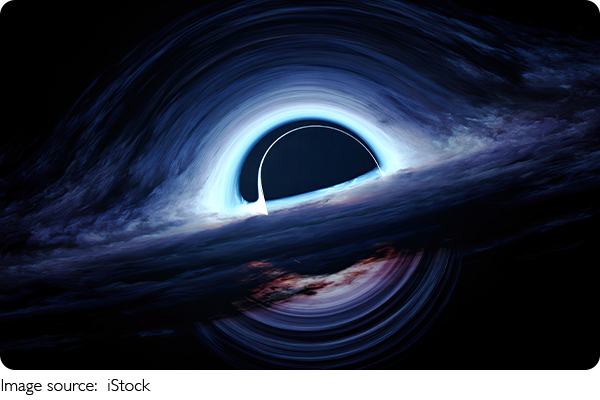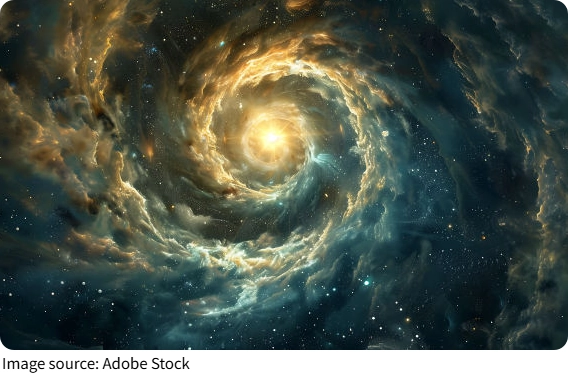Understanding Black Holes

Imagine a place in space where gravity is so powerful that not even light can escape.
That's a black hole—a region in space where matter has collapsed into an incredibly small point with an immense gravitational pull. But how do these mysterious cosmic objects form, and what are they really like?
The Formation of Black Holes
Black holes are born when massive stars reach the end of their life cycle. The process starts with a star that has run out of fuel. Without this fuel, it no longer has the energy to counteract gravity. As the star's core collapses under its own weight, it can create a singularity—a point in space where gravity is infinitely strong. Surrounding this singularity is the event horizon, the boundary beyond which nothing can escape.
1. Massive stars: When a star that's at least 8 times heavier than our Sun burns out, it can no longer support itself against gravity.
2. Core collapse: As the star's core collapses, the outer layers are blown away in a massive explosion known as a supernova.
3. Singularity and event horizon: The collapse results in a singularity—an infinitely dense point—and the event horizon, a point of no return.
An example of this process is the creation of the black hole at the center of the Milky Way galaxy, which likely formed from a massive star long ago.
Key Properties of Black Holes
Black holes are often described as cosmic “vacuum cleaners," but they're much more complex. Despite their reputation for devouring everything around them, black holes have some very interesting properties.
1. Singularity: The core of the black hole, where gravity is so intense that space and time lose their usual properties.
2. Event Horizon: The point around the black hole where the escape velocity exceeds the speed of light. Once crossed, nothing can escape.
3. Hawking Radiation: This theoretical radiation suggests that black holes might slowly lose mass and energy over time, potentially evaporating.
It's also important to note that not all black holes are the same. There are different sizes, from stellar black holes formed by collapsing stars, to supermassive black holes found at the centers of galaxies, like the one in our own Milky Way.
How Do We Detect Black Holes?
Since black holes don't emit light, they are incredibly difficult to detect directly. But scientists have developed clever ways to infer their presence through the effects they have on their surroundings.
1. Gravitational influence: Black holes affect the movement of nearby stars and gas. If scientists notice a star orbiting an invisible object, it may be a black hole pulling on it with its gravity.
2. X-ray emissions: Matter falling into a black hole heats up and emits X-rays, which we can observe with telescopes. This is often seen in binary star systems where a black hole pulls matter from its companion star.
3. Gravitational waves: In 2015, the Laser Interferometer Gravitational-Wave Observatory (LIGO) detected gravitational waves—ripples in space-time caused by black hole mergers. This was the first direct evidence of black holes colliding.
For example, the discovery of gravitational waves from the merger of two black holes was a groundbreaking moment in astronomy, opening up a new way of studying these enigmatic objects.
The Importance of Studying Black Holes
Studying black holes isn't just about exploring the weirdest parts of space. These mysterious objects can teach us a lot about the laws of physics, including how gravity behaves under extreme conditions.
1. Understanding general relativity: Black holes are crucial for testing Einstein's theory of general relativity, especially under extreme conditions of gravity.
2. Exploring quantum mechanics: By studying the event horizon and Hawking radiation, scientists hope to bridge the gap between general relativity and quantum mechanics, two of the most important theories in physics.
For example, by observing how objects move near black holes, we can learn more about the fundamental forces that govern the universe, helping us answer some of the biggest questions in science.
The Future of Black Hole Research
The study of black holes is far from over. With new technologies, we're constantly finding new ways to observe and understand them. The Event Horizon Telescope (EHT), for example, made history by capturing the first-ever image of a black hole in 2019. As observational tools get more advanced, it's likely that we'll uncover even more about these cosmic mysteries.
In the future, black hole research could help us answer profound questions about the nature of space, time, and even the ultimate fate of the universe.

Conclusion
Black holes are not just space oddities; they're windows into the very nature of the universe. By studying them, we can learn about gravity, time, and the fundamental forces of the cosmos. While we've made significant strides in understanding these mysterious objects, the journey to fully grasp their nature is just beginning. The more we discover, the more we unlock the secrets of the universe, one black hole at a time.

 · Astronomy Team
· Astronomy Team